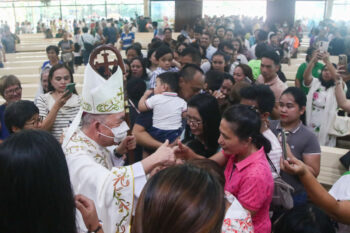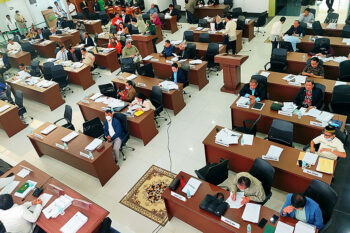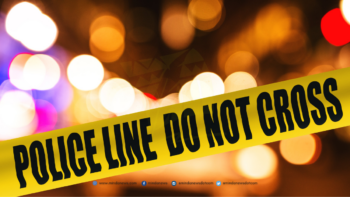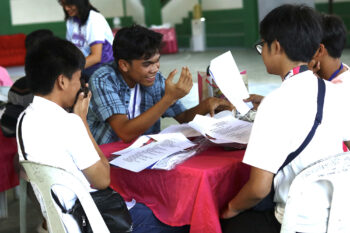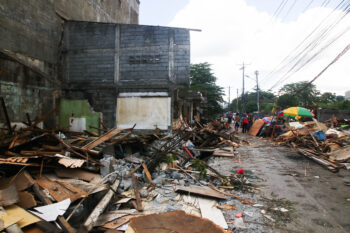DAVAO CITY (MindaNews /21 November) — So, there. It’s done, finally.
What many of us thought to be, well, unthinkable, has happened: the noontime burial of the late stongman in the Libingan ng mga Bayani.
It hasn’t been ten hours since the 21-Gun Salute at the cemetery, and the feeling of being in a Brechtian play still isn’t wearing off.
I’d spent the better part of my Twenties fighting Marcos. Not that I was in the underground movement.
But in the perilous fringes I was, writing stories about state-sponsored violence in the countryside, immersing myself, albeit briefly, with the mundane lives of the guerrillas, soaking my brain into the tomes of literature on liberation theology.
As a “church journalist,” if ever I knew one, I’d been frisked on a sidewalk, without warning, by someone I didn’t know, who spoke not a word while staring me down, leaving me shaken and utterly violated at broad daylight while passersby went about their business. Together with colleagues in a taxi, I’d been pointed a gun at, by some plainclothesman who wasn’t twenty feet away, and who’d tucked away his .45 caliber with the nonchalance of somebody paying a jeepney driver.
These were nothing compared to what countless others had gone through.
For simply speaking out against Marcos and his New Society, people were routinely abducted. Many were tortured out of their minds by military upstarts who would later on become VIPs. Many were killed. The Left found itself heavily infiltrated. And eventually, it, too, began killing its own. It was a nightmare.
So when, at the outset of the presidential campaign, Duterte declared he would allow FM’s burial at the Libingan, I balked. My first thought was: What would the victims of martial law say, if they could speak now? The next questions painfully came out of my head like oversized newborns sliding from the wombs of troubled deliveries: Doesn’t Duterte’s decision dishonor the martyrs of the dictatorship? Doesn’t it—or he—mock the memories of the victims and their survivors?
Will not the decision become a precedent for further entrenching the Marcoses in Philippine society? Will FM’s interment not violate the sacredness of those hallowed grounds?
Hard questions.
Yet there may be harder ones to ponder.
Like: How was it that we didn’t oppose the return of the Marcoses in 1991, the same way we rabidly oppose the burial today? How was it that we didn’t oppose Imelda and her children running for and assuming various political positions? How was it that our mainstream media had gleefully interviewed each of them, in many separate occasions, like they were celebrity, bereft of wrongdoing and deserving of the attention, nay accolade, of the new millennium? How was it that we didn’t oppose the return of Marcos’s cronies, some of whom ending up controlling vast conglomerates? Why was it that we allowed the return of his henchmen and torturers, they who now enjoy the trappings of power?
How could we have allowed Marcos’s loot, estimated to be in the vicinity of $5-10 billion, to remain largely unrecovered, on account of a combination of naïveté and plain incompetence, while Imelda has her face emblazoned across some fashion line while chiming about cosmic redemption to anyone who cares to listen?
No one, not a single family member or their crony, has spent a day in jail. After all these years, that alone says a lot not only about them, but about us.
As the proverbial chickens have now come home to roost, perhaps it behooves us to go easy on carping about dishonoring the dead, having practically dishonored even the living with our comportment over the last three decades.
Rile we must, yes. But let us rile completely, responsibly, and rightly. (MindaViews is the opinion section of MindaViews. Nikki Gomez is author of “Coffee and Dreams on a Late Afternoon–Tales of Despair and Deliverance in Mindanao,” and “Mindanao on My Mind and Other Musings,” both published by the UP Press).



